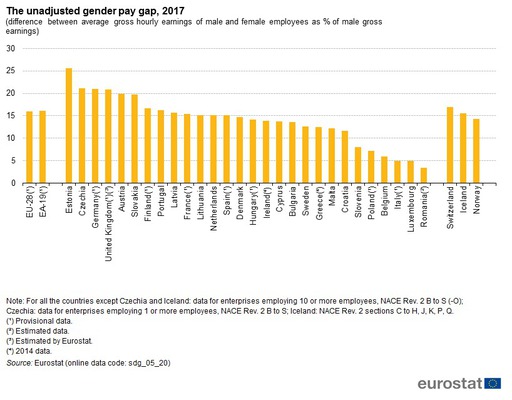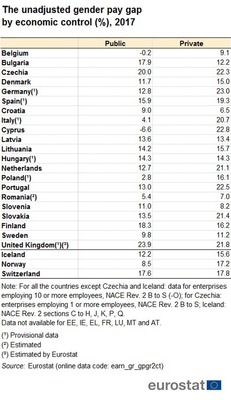In 2017, the highest gender pay gap in the EU was recorded in Estonia (25.6 %) and the lowest in Romania (3.5 %).

The gender pay gap is generally much lower for new labour market entrants and tends to widen with age. However, those differences over age groups can have different patterns across the countries (Table 1). The gender pay gap might increase with age as a result of the career interruptions women experience during their working life, particularly older women unable to benefit from specific equality measures which did not yet exist when they started to work.
The gender pay gap in financial and insurance activities is higher than in the business economy as a whole
In 2017, the gender pay gap in financial and insurance activities varied from 18.3 % in Italy to 40.2 % in Estonia. Within the business economy as a whole, the highest gender pay gap was recorded in Estonia (26.2 %) and the lowest in Romania (7.3 %).
In 2017, the majority of the EU countries (for which data are available) recorded a higher gender pay gap (in absolute terms) in the private sector than in the public sector. This might be due to the fact that within the public sector, in most countries, employees are protected by collective pay agreements and other similar contracts establishing pay. The gender pay gap varied in the private sector from 7.0 % in Romania to 23.0 % in Germany, and in the public sector from -6.6 % in Cyprus to 23.9 % in the United Kingdom.
